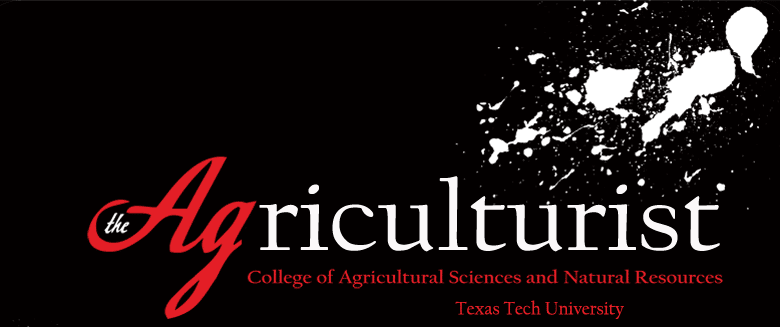
Table of Contents
Features
Agriculture: We Can Sustain It
Socializing Agriculture
Painter of Quiet Places
An Apple a Day
Sustaining the Four Sixes
Hitting Pay Dirt
The New Face of Agriculture
The Winds of Change
Avatars Animate Agriculture
Professors in Training
Going Green
Saving Lives One Plan at a Time
Protecting Our Food
Quality Cells, Consumer Buys
Tech's New Mate
Micro ZAP
Food Saftey in Mexico
Expanding Opportunities
No Bits About It
The Family Farm Fire Man
Around the World with CASNR
Live From Texas Tech
Looking Forward
Getting Schooled
A Cotton Senstaion
Living and Learning
More Than a Trophy
Online Exclusives
Alumni Lance Barnett: Unpeeled
Agricultural Education and CommunicationDepartment Shines in 2010
CSI: Classroom Soil Investigation
Facing Nature
GINuine
Healing Hooves
Parking and Partying in Style
Raider Red Meats
Standing TALL
Tech Takes Flight
West Texas Cotton Goes Global
Socializing Agriculture
By Amber Oldham
The past of agriculture is filled with milestones that often occurred through the embracement of new technologies. Today agriculture is evolving again with the use of social media including Facebook and Twitter. The infusion of these new technologies into agriculture will affect everyone from the producer to the consumer.
Helping revolutionize the way social media is used in agriculture is Jeff Fowle, a fourth generation farmer and rancher who is also president of the AgChat Foundation.
“The purpose of the AgChat Foundation is to empower farmers and ranchers to reconnect with consumers,” Fowle said. “We want to be able to teach farmers and ranchers how to utilize the available social media tools to the best of their ability; to reach consumers and customers and be comfortable and capable of sharing in dialogue.”
Many consumers have conflicting perceptions about agriculture and its producers, and Fowle explained how social media can give a face to farmers.
“Consumers want to know where their food comes from, how it was grown and what was done to get it from field to flatware,” Fowle said. “Social media is allowing this connection to be made, and we’re seeing a ‘rebirth’ of the humanity of agriculture.”
Stephanie Pruitt, communications director for both the Texas Corn Producers Board and the Texas Peanut Producers Board, agreed social media can serve as a valuable tool for organizations.
“I definitely think it’s beneficial. We don’t have many producers in our organizations that are involved in these social media realms, but it’s definitely been a great way to interact with producers across the nation and also be able to interact with consumers,” Pruitt said. “The consumers are the people we need to make sure that they understand who we are and what we do.”
However useful social media may be, Pruitt said the importance of implementing a plan when using social media must not be overlooked. Knowing how frequently to release information is just as important as tailoring messages.
“The big thing is to remember that social media is just that – a social tool,” Pruitt said. “It’s a networking tool, an interactive tool, not a broadcasting tool. And that’s something many marketers are struggling with and not grasping. There’s a fine line between posting too much and posting just enough.”
Researchers agreed posting too much information can be overkill.
“I’ve suffered from Twitter burnout on some people, and I want to unfollow them because they post too much stuff, but every now and then they post something that’s interesting,” said Courtney Meyers, assistant professor in Agricultural Education and Communications at Texas Tech University.
Not only have experts agreed social media is valuable, but it can be seen in the influx of individuals taking agriculture to the next level.
“We all share a deep passion for reconnecting farmers and ranchers with consumers,” Fowle said. “Social media presents a unique opportunity for agriculture to reach out to a multitude of folks without having to rely on industry organizations and national news.”
Fowle estimated more than 1,000 farmers and ranchers use social media to communicate and further engage audiences with product and other pertinent information.
As a farmer and rancher, Fowle uses various social media forms to communicate messages and interact with users.
“I predominately utilize Twitter, blog a little bit and try to post a couple times each day to Facebook,” Fowle said. “I have seen positive outcomes through the use of Twitter. It is a nice tool to utilize to carry on a short, yet still informative conversation in real time.”
While Fowle indicated farmers and ranchers are using social media, some view it with doubt and suspicion while others may not even have access.
“As in any sector of society, it is viewed skeptically at first, until returns can be noticed. Agriculture is no different. Those who have an understanding of technology have begun to embrace it rather handily; others are slowly following,” Fowle said.
Determining which social media tools to use is a common question among researchers and users.
“Comparing Facebook and Twitter is like comparing apples to oranges, where if you put them together it’s the start of a pretty good salad,” Meyers said. “People use Facebook for personal interaction. People use Twitter for informational purposes or to share information. Combining the power of those and other social media forms extends the ability to communicate.”
Texas Tech agricultural communications graduate student Mica Graybill’s research suggested using multiple social media tools together can only benefit the agricultural community. Graybill said this is apparent from the AgChat Foundation and other organizations using social media.
“Social media has already made its presence in agriculture. It is clear that multiple tools are useful,” Graybill said. “One person I spoke with said it is astonishing to many Americans that farmers aren’t just out hauling hay or on the tractor; we’re embracing technology too.”
Graybill explained having a presence is imperative to a successful social media plan.
“The first thing you need to do is create your social media page,” Graybill said.
Graybill believed an organization should start inviting people, who in turn will invite their friends. She said making a presence will familiarize people with an organization’s cause, and they will start utilizing what the organization has to offer.
“You have to make it so unique and different and present yourself in such a way that they keep wanting to come back to you for more information,” the graduate student said. “They want to learn all that they can about what you have to promote.”
Professor Meyers agreed with Graybill’s findings.
“Start with one form of social media and really learn how to use it, such as Facebook. Start a Facebook group page and learn how to use it. Then, branch out and use Twitter. And then, maybe start a blog,” Meyers said.
As the digital age continues to progress, social media will play an even more prevalent role in our society and the way we communicate. These tools will bring together the producer and consumer while impacting the agricultural industry.
“Social media is prevalent,” Graybill said. “It can share agriculture’s story with people and make the agricultural industry’s presence known across the United States.”